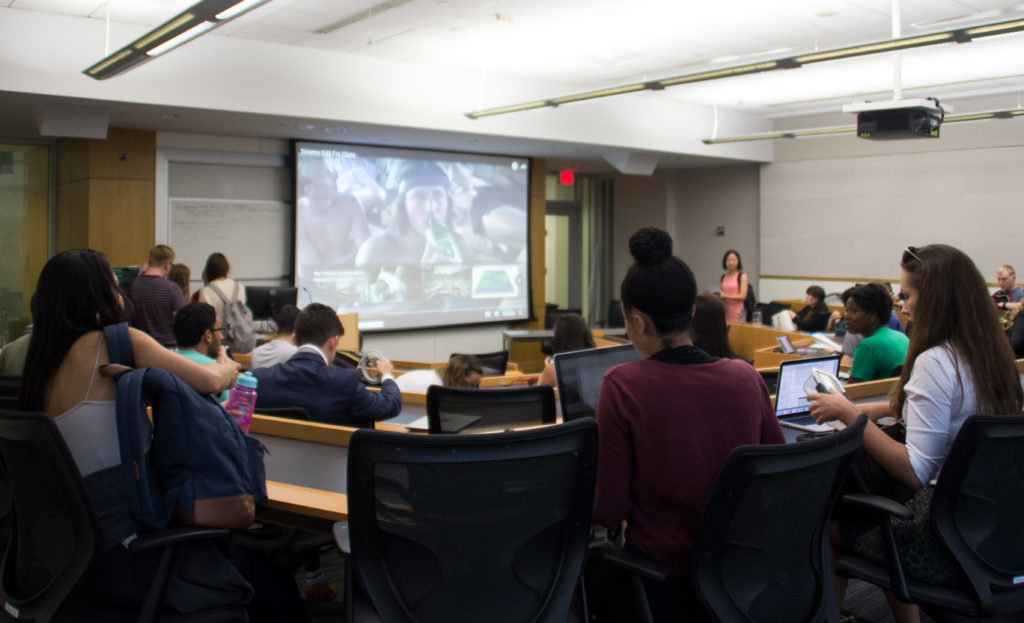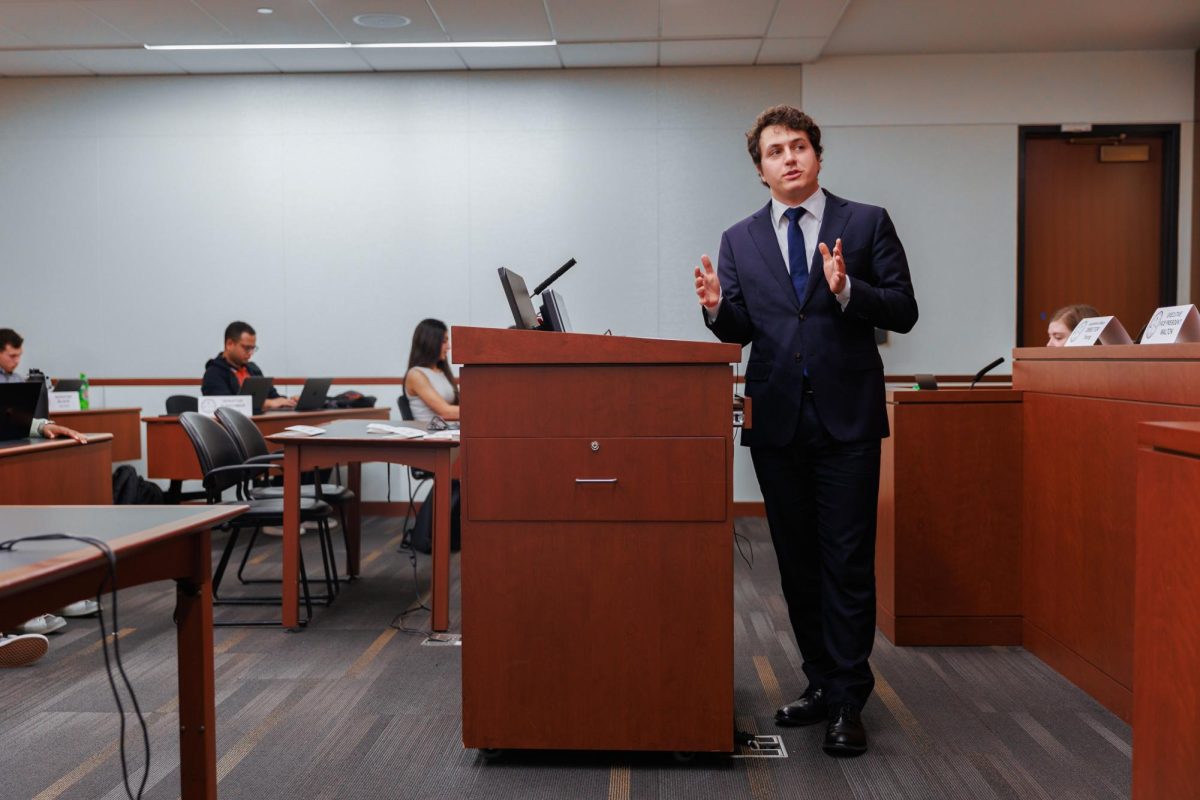Updated: August 31, 2017 at 10:57 a.m.
Dalila Benachenhou, a professor of data statistics, said she used to worry that when she turned off the projector in her Rome Hall classroom, it would never come back on.
Benachenhou said her course on coding languages could not be taught without using a projector so when it broke down, she would have to stop class and call for technology support.
“It’s not like I can write a code on the blackboard and say ‘If you put this it does this,’” she said. “I need the projector to show them how to code.”
But Benachenhou said technology problems are no longer a worry this academic year after Academic Technologies revamped the technology in her third-floor classroom this summer – part of a three-year-long project to improve technological offerings in academic buildings across campus.
Since the initiative began in the summer of 2014, nearly 100 classrooms have been outfitted with new technology – allowing faculty to host web conferences with guest lecturers and project class materials housed on iPhones, iPads or MacBooks to the entire classroom, Geneva Henry, the dean of libraries and academic innovation, said. Faculty and technology experts said the improvements would likely encourage students to be more engaged and attentive in class.
“We have to learn the technological capabilities and then we have to learn how to incorporate it into our classroom.”
Academic Technologies added the programs to meet new digital standards for student learning, Henry said. Seven academic buildings, including the Elliott School of International Affairs, School of Media and Public Affairs and Funger, Phillips and Duques halls have received upgrades, according to the department’s website.
“Under the leadership of the Office of the Provost, we exceeded our initial three year goal for the start of the fall 2017 semester and will continue to work toward the goal of outfitting all general purpose classrooms with the appropriate technological resources, allowing students and faculty to explore, discover and create knowledge in new ways,” she said in an email.
The department had originally aimed to upgrade 60 classrooms by this fall. Officials have already completed work in 98 rooms, Henry said.
Thomas Gross, a professor of international business transaction, said during the summer there was a classroom in Duques Hall where he frequently taught that was reequipped with Apple AirPlay, allowing faculty and students to sync their iPhone or iPad with a Smart Board screen. He said the upgrade creates a more interactive learning environment for students.
“This allows for real-time interaction with real-time events and if we find something we can put it up on AirPlay and its spontaneous,” Gross said.
He said that while the new technology in the classroom is a boon to students and faculty, professors must learn how to best incorporate it into their teaching.
“It’s a two step process,” Gross said. “We have to learn the technological capabilities and then we have to learn how to incorporate it into our classroom. For me this is not so much about facilitating teaching, it’s about facilitating students learning.”
“We too often treat technologies, like classrooms technologies, as expenses. What we need to look at them as is educational investments.”
Jason Warner, the director of the Academic Technologies department at Southern Methodist University – one of GW’s peer universities – said prioritizing classroom technology is crucial for students’ learning experience, but it’s often challenging for universities who are forced to tighten their budgets while also keeping up with the latest trends.
“We too often treat technologies, like classrooms technologies, as expenses,” Warner said. “What we need to look at them as is educational investments.”
Warner said the number of classrooms updated may not sound like many in the grand scheme, but updating that many rooms with the appropriate technology takes a lot of coordination between departments.
Academic Technologies will move into Gelman Library by this fall, in an attempt to centralize the department under one roof after budget cuts in 2016.
Paul Bergen, the director of Educational Technology and Learning Spaces at Tufts University, said there is a lot of research that goes into how much technology can assist student learning. Faculty increasingly want to incorporate technology into their classroom to facilitate more effective teaching, he added.
“It can help students be more engaged in their learning by creating opportunities inside and out for group work and their in class work more active,” he said.





